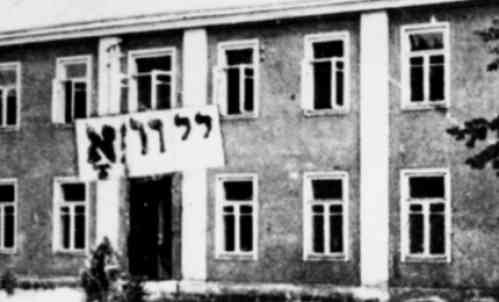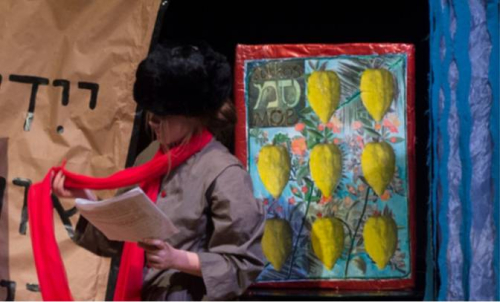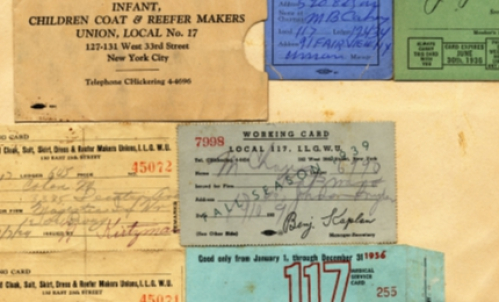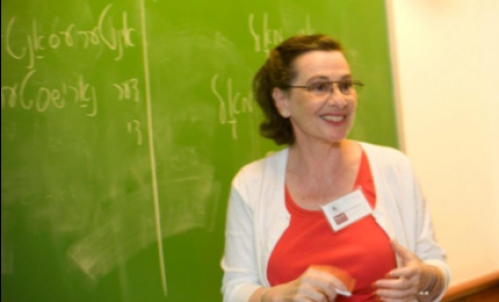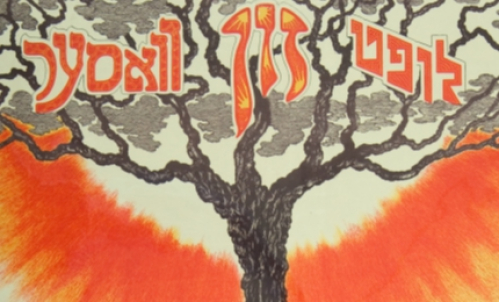What Does It Mean to Conserve Documents and Books?
Letter from the Conservation Lab
by ALEXANDRA MICHAUD
“But where does all this stuff come from?”
The millions of items in our archives and hundreds of thousands of books in our library come from generous gifts of private collections. From your great-aunt’s attic. From landsmanschaftn, Yiddish presses, HIAS, the Hebrew Actors’ Union. From Imperial Russia, the Warsaw Ghetto, Fascist Italy. Shanghai, Buenos Aires, Montreal. From war-torn Europe, seventy years ago.
YIVO’s presence in New York was organized in the 1920s not long after the birth of the original YIVO in Vilna, Poland (now Vilnius, Lithuania). The American Branch was initially intended to collect and preserve documents relevant to Jewish communities in America, but as the Second World War threatened to erase Jewish life in Europe, YIVO in New York expanded its focus to preserving Jewish culture and history everywhere and became the organization’s main headquarters.
The Nazis converted the original YIVO building in Vilna to a repository for looted Jewish cultural artifacts. They conscripted a group of Vilna ghetto inmates and YIVO employees to sort and prepare these materials for shipment to the Institute for Research into the Jewish Question in Frankfurt. But they picked the wrong inmates: Zelig Kalmanovitch, Uma Olkienicka, Abraham Sutzkever, Szmerke Kaczerginski, Rokhl Pupko-Krynski, and Daniel Feinstein, known as the Paper Brigade, rescued thousands of documents, books, and objects from destruction by smuggling them out of the building and hiding them in the Vilna Ghetto.*
We are now working, in partnership with the Lithuanian Central State Archives, the Martynas Mažvydas National Library of Lithuania, and the Wroblewski Library of the Lithuanian Academy of Sciences to eternalize the materials they saved by restoring these documents and digitizing them to form the Edward Blank YIVO Vilna Online Collection, which will virtually reunite YIVO’s prewar library and archival collections.
Before these materials can be digitized, they need to be conserved. (Read more about the preservation process.) It is the task of conservators to restore and repair these materials in preparation them for their digital afterlife. To conserve paper and parchment, we employ techniques from a variety of fields, such as bookbinding and inorganic chemistry, to reveal and repair as much of the original material as possible.
Every day, I open a grey archival box full of musty paper. Sometimes I wear a mask to avoid inhaling mold, or merely for relief from the smell of mildew. Sometimes by noon my workspace is dusted with soil from the Vilna Ghetto. Sometimes the paper is healthy, and I spend the morning flicking through reams of Yiddish, Russian, Polish, and German, looking for wrinkles and tears. My fingertips are often stained with dust and old ink.
Based on the state of the above playbill, it appears that this may have been buried in the Vilna Ghetto.
The first thing to do is to clean off the dust with a soft, fluffy brush. There may be some mold here. It’s dry, so likely dead, or “inactive,” and won’t spread, so I gently brush it off with a slightly stiffer brush. Once I’ve done this on both sides, it’s time to smooth out the wrinkles. I loosen the tight creases with my fingers and use a small wet brush to dampen the paper where it’s particularly dry and delicate. Then I lay the playbill on a sheet of thick parchment, lay another sheet of parchment on top, and flatten the paper with a sealing iron, one section at a time, until the paper is smooth. Next, I’ll use a rubber sponge to pick up any remaining dust and dirt. The paper is very fragile, so this step must be taken with great care—often it is very difficult to remove all discoloration without tearing the paper.
When the paper is as clean as I dare, I’ll get to work on the holes and tears. I use a thin tissue coated with glue on one side for this. I tear apart a strip or a little patch of the tissue with my fingers (the seams are less visible than if I were to cut the strips with scissors), line up the torn edges of the paper, and use the sealing iron to bond the glue-tissue with the paper. Where there is paper missing, I’ll repeat the process on the other side of the playbill, and trim off excess with an art knife. For paper that is extremely fragile I will then encase the document in a sleeve made of mylar, a transparent and nonreactive plastic.
Once finished, the playbill is ready to return to its folder to await digitization and begin its third life online.
*Learn more about their bravery in Embers Plucked from the Fire: The Rescue of Jewish Cultural Treasures in Vilna by David E. Fishman. New York: YIVO, 2009 and The Book Smugglers: Partisans, Poets, and the Race to Save Jewish Treasures by David E. Fishman. Lebanon, NH: ForeEdge, an imprint of University Press of New England, 2017, and a fuller account of their contributions to YIVO can be found in the Guide to the YIVO Archives, Fruma Mohrer and Marek Web, eds., M.E. Sharpe. Armonk, New York, London, 1998.
Alexandra Michaud is a Project Conservator for the Edward Blank YIVO Vilna Online Collections.
